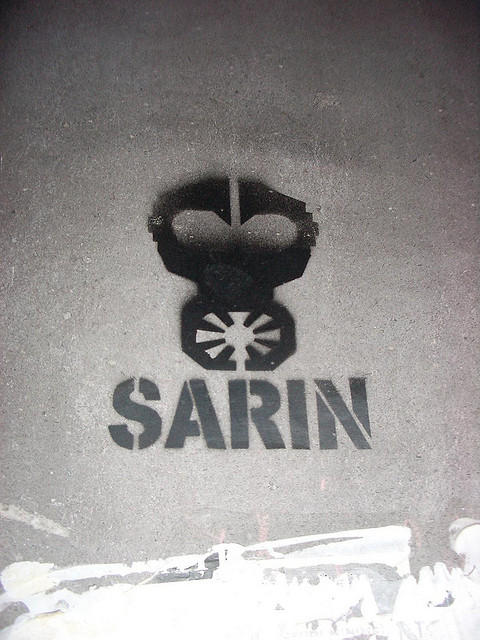How Can the U.S. Government Know If Syrian Combatants Were Affected by Sarin Gas?
Reports from the White House that sarin gas were used in Syria, but how could you test for it?

Photo: bixentro
In a letter to Congress, writes the Guardian, the White House stated that officials believe, with “varying amounts of confidence,” that the chemical weapon sarin was used in the ongoing conflict in Syria and that the use of this type of weapon “would very likely have originated with” supporters of Bashar al-Assad and the Syrian government. The link between the use of sarin and al-Assad is not completely firm, though, and the U.S. Intelligence community is looking for more proof of what’s really going on.
Sarin, wrote Smart News previously, is a nerve agent first developed in 1938 Germany. “A colourless, odourless gas with a lethal dose of just 0.5 mg for an adult human,” sarin, “can be spread as a gaseous vapor, or used to contaminate food. The CDC says that symptoms can arise within seconds, and can include, like VX, convulsions, loss of consciousness, paralysis, and death.” And according to a 2002 article from the New York Times, sarin “dissipates to nondeadly levels after a few hours.”
How exactly are investigators supposed to figure out what’s going on in Syria? According to the Guardian, the United Nations will carry out analyses of soil samples collected in Syria to try to figure out if sarin gas was used. But, says Wired‘s Danger Room, there is another way to check for sarin.
The U.S. military tests for evidence of nerve gas exposure by looking for the presence of the enzyme cholinesterase in red blood cells and in plasma. (Sarin messes with the enzyme, which in turn allows a key neurotransmitter to build up in the body, causing rather awful muscle spasms.) The less cholinesterase they find, they more likely there was a nerve gas hit.
The problem is, some pesticides will also depress cholinesterase. So the military employs a second test. When sarin binds to cholinesterase it loses a fluoride. The pesticides don’t do this. This other test exposes a blood sample to fluoride ions, which reconstitutes sarin if it’s there, in which case it can be detected with mass spectrometry.
Blood samples are drawn from a pricked finger tip into a 10 milliliter tube. They can be kept fresh for about a week before they have to be used in the blood analyzer, a gizmo about the size of a scientific calculator that produces varying shades of yellow depending on the cholinesterase level.
There is still a lot of uncertainty around this news, both about what happened and what, if anything, to do about it. At least there are relatively specific tests that can be done to sort out the first question.
More from Smithsonian.com:
/https://tf-cmsv2-smithsonianmag-media.s3.amazonaws.com/accounts/headshot/smartnews-colin-schultz-240.jpg)
/https://tf-cmsv2-smithsonianmag-media.s3.amazonaws.com/accounts/headshot/smartnews-colin-schultz-240.jpg)